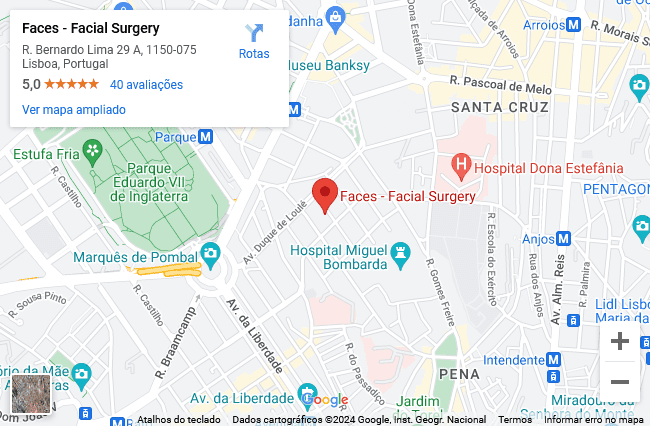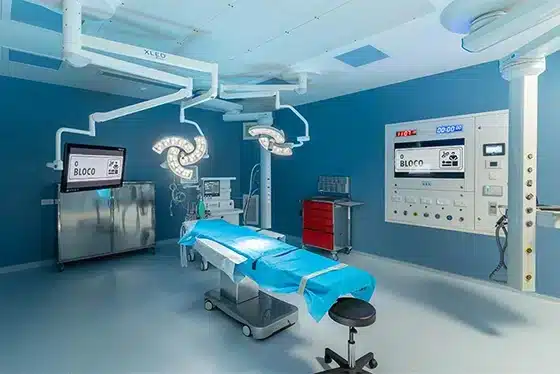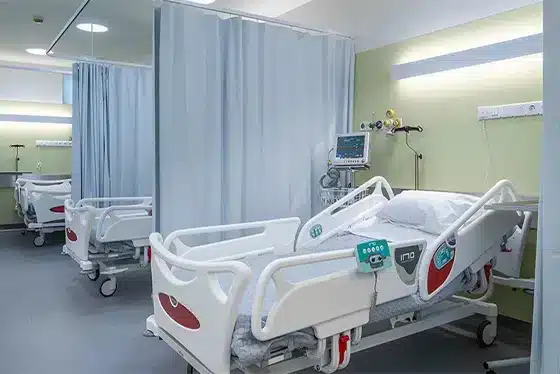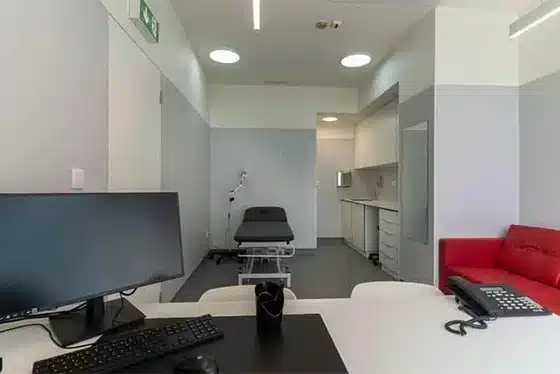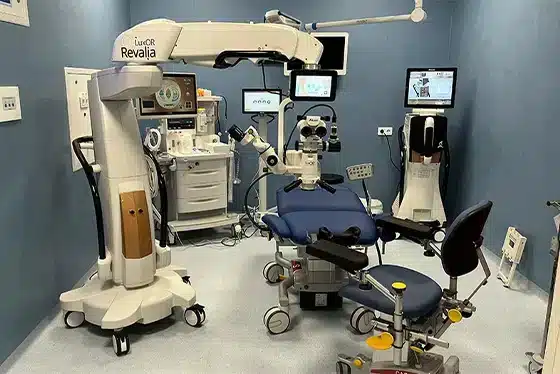Swelling of Lymph Nodes: Causes and Treatments
The swelling of lymph nodes is a frequent clinical sign that denotes the activation of the immune system and can occur in response to a variety of stimuli, including infectious processes, inflammatory states or even reactions to certain therapies. This article explores, based on scientific evidence, the multiple dimensions of this phenomenon, highlighting the importance of accurate diagnosis and individualised follow-up for appropriate management of the condition. Early identification of swollen lymph nodes is crucial in guiding a thorough investigation and defining the best therapeutic strategy.
In recent decades, the study of lymph node swelling has gained clinical relevance, as their presence can be the first sign of an active immune response. Studies demonstrate that, in many cases, this swelling occurs transiently, being associated with respiratory, viral and bacterial infections, but it can also reflect chronic inflammatory conditions or even autoimmune situations. Thus, understanding the underlying causes becomes essential for safe and effective clinical intervention.
The presence of swollen lymph nodes requires a careful analysis of symptoms, medical history and predisposing factors of each patient. This meticulous evaluation allows the differentiation of a benign immune response from conditions that may occasionally require additional complementary investigations. An integrated clinical approach and collaboration between the doctor and the patient are determining factors in choosing the best therapeutic path.
The Role of Lymph Nodes in the Body
Lymph nodes are central to the body’s defence, acting as true filters that capture and neutralise microorganisms, abnormal cells and metabolic waste. Distributed throughout the body – from the neck and armpits to the thoracic cavity and groin area – these small organs have a complex structure filled with immune cells, namely B and T lymphocytes, which perform specific functions in the immune response.
The architecture of the nodes allows for the rapid exposure of antigens to the defence cells, facilitating the production of antibodies and the elimination of pathogenic agents. In this context, the swelling of lymph nodes can be interpreted as an indicator that the immune system is actively responding to an attack, with the intensity and distribution of this swelling providing important clues about its aetiology.
In addition to their functional role, lymph nodes are also markers of inflammatory activity. In cases of infection, these organs increase in size due to the proliferation of immune cells and the accumulation of fluids, a process that explains the swelling of lymph nodes. This response is crucial for limiting the spread of infections and initiating tissue repair mechanisms.
The importance of lymph nodes lies not only in their function as a biological barrier but also in their ability to signal changes in the body’s homeostatic balance. Thus, the evaluation of swollen nodes becomes an essential step in clinical investigation, contributing to the differential diagnosis between benign conditions and pathologies that may require more specific treatment.
Causes of Lymph Node Swelling
Various mechanisms can trigger the swelling of lymph nodes, manifesting as an adaptive response of the body. Amongst the most common causes are infections, which can be viral, bacterial or, in some cases, fungal in origin. Viral diseases such as infectious mononucleosis, cytomegalovirus and other viral infections are frequently associated with lymph node swelling, as the immune system reacts to the presence of the viruses.
In bacterial infections, the presence of bacteria in the region – as occurs in tonsillitis, tuberculosis or dental infections – leads to an intense inflammatory response, marked by the massive recruitment of immune cells to the lymph nodes. This process results in a temporary but sometimes pronounced increase in the size of the lymph nodes, constituting a clinical sign that deserves attention.
In addition to infections, chronic inflammatory conditions and autoimmune diseases, such as systemic lupus erythematosus and rheumatoid arthritis, can also cause lymph node swelling. In these contexts, persistent immune stimulation leads to hyperactivity of lymphocytes, contributing to structural and functional changes in the nodes.
Other less common causes involve reactions to certain medications and vaccines, which can trigger an idiosyncratic immune response. In such situations, the swelling of lymph nodes appears as part of a reactive spectrum, usually of short duration, but which highlights the need for careful clinical follow-up.
In situations of lymphatic system obstruction, lymph node swelling may be accompanied by secondary lymphoedema of the surrounding tissues. This scenario is observed, for example, in some cases of chikungunya fever, where a severe inflammatory response may evolve into an alteration in lymphatic flow, resulting not only in an increase of the nodes but also in limb oedema¹.
It is important to emphasise that lymph node swelling does not constitute a disease in itself but rather a clinical sign that reflects the body’s attempt to react to different stimuli. Therefore, its evaluation should be carried out alongside the investigation of other symptoms and clinical signs to establish the underlying cause and determine the most appropriate treatment.
Diagnosis and Clinical Evaluation
The diagnostic process of lymph node swelling begins with a detailed history-taking, which investigates the duration, evolution and intensity of the swelling, as well as the presence of associated symptoms, such as fever, night sweats, fatigue or weight loss. These elements help guide the diagnostic hypothesis and differentiate between transient immune responses and conditions that may suggest more serious pathologies.
During physical examination, the doctor palpates the nodes, assessing parameters such as consistency, mobility, tenderness and size. Firm, fixed nodes of progressively increasing size may raise suspicion of neoplastic processes or infections that require more in-depth investigation. In contrast, a discreet, transient enlargement associated with acute infection symptoms tends to indicate a benign condition.
To complement the clinical evaluation, laboratory tests are conducted, including a complete blood count, measurements of inflammatory markers and, in some cases, specific antibody titrations. The presence of leukocytosis or elevated C-reactive protein levels, for example, can support the hypothesis of an active infectious or inflammatory process.
Imaging tests, particularly ultrasonography, also play a fundamental role in the characterisation of lymph nodes. Ultrasonography allows the assessment of the nodes’ morphology and vascularisation, helping to identify signs of alteration that may require more detailed investigation. In certain situations, additional complementary exams, such as computed tomography, may be indicated to elucidate the extent of the pathology.
The integration of clinical, laboratory and imaging data is essential for formulating an accurate diagnosis. Thus, lymph node swelling becomes a starting point for a multidimensional investigation, which aims not only to identify the cause but also to implement therapeutic measures that allow for proper case management.
Treatment Options for Lymph Node Swelling
The management of lymph node swelling primarily involves identifying and treating the underlying cause. When this is due to bacterial infections, intervention with antibiotics targeted at the pathogenic agent is generally considered the first-line strategy. In these cases, the restoration of immune equilibrium is achieved through the elimination of the infectious agent, leading to the gradual resolution of the lymph node swelling.
In viral infections, treatment takes on a more supportive nature, focusing on symptom relief. Administering analgesics, antipyretics and anti-inflammatories, combined with recommendations for rest and adequate hydration, enables the body to combat the infection while the nodes respond to the immune system’s intervention. Frequent follow-up, often conducted via telephone contact, is recommended to monitor the condition’s progression and adjust therapy as necessary.
In situations where lymph node swelling results from inflammatory processes associated with autoimmune diseases, the use of immunomodulatory and systemic anti-inflammatory medications may be necessary. In these cases, treatment is individualised, taking into account symptom severity, patient profile, and therapeutic response over time.
Additionally, in situations involving secondary lymphoedema, supportive physical measures such as warm compresses and lymphatic drainage techniques – always performed under professional supervision – can be integrated into the therapeutic approach. These interventions aim to improve lymphatic circulation and reduce oedema, contributing to symptom improvement and patient quality of life.
The choice of appropriate treatment for lymph node swelling is thus based on a careful assessment that considers the aetiology, condition progression, and individual clinical circumstances. Therefore, the therapeutic approach tends to be multifaceted and oriented towards resolving the pathological process safely and effectively.
Complementary Care and Lifestyle Changes
In addition to direct clinical interventions, complementary care and lifestyle changes can play an important role in managing lymph node swelling. A balanced diet, rich in vitamins, minerals and antioxidants, has the potential to strengthen the immune system and facilitate the response to infectious or inflammatory conditions. Diets including fruits, vegetables, whole grains, and lean protein sources are often recommended to optimise immune function.
Regular physical exercise, adjusted to the possibilities and limitations of each individual, can also significantly contribute to the management of lymph node swelling. Activities such as walking, aerobic exercises, and stretching help stimulate blood and lymphatic circulation, promoting the natural elimination of accumulated toxins and encouraging a metabolic balance that can reduce oedema intensity.
Stress management is another critical aspect of the complementary care strategy. Chronic stress is known to negatively impact the immune system, potentiating inflammatory states that, in turn, can worsen lymph node swelling. Relaxation techniques, meditation, yoga, and other mental wellness practices can help maintain healthy stress hormone levels, contributing to a more balanced immune response.
Other supportive measures include applying warm compresses to the affected area, which can help relieve discomfort and stimulate local circulation. In some cases, combining these interventions with conventional medical therapy allows for a more holistic approach, where pharmacological treatment and complementary care act synergistically to promote recovery.
It is crucial that lifestyle change strategies are incorporated as an integral part of the therapeutic plan, without, however, replacing specific medical evaluation and treatment. Each intervention should be individualised, considering both clinical effectiveness and adaptation to each patient’s needs and conditions.
Lymph Node Swelling in Specific Conditions: The Case of Chikungunya
In certain viral infections, such as chikungunya fever, lymph node swelling assumes particular clinical importance. In this disease, the immune response is often intense and can trigger symptoms beyond the classic signs of infection. Chikungunya fever is characterised, in addition to high fever and myalgia, by the potential development of complications, including lymph node swelling.
Scientific studies have documented that in some patients with chikungunya fever, the inflammatory response can exceed usual limits, leading to changes in lymphatic flow that manifest as secondary limb lymphoedema¹. This clinical picture, although infrequent, underscores the importance of rigorous and individualised monitoring, to detect any signs of progression early.
In the context of chikungunya fever, symptom monitoring is fundamental for timely intervention. Lymph node swelling, when associated with intense joint pain and progressive tissue oedema, should alert to the need for an immediate clinical re-evaluation. Regular telephone contact between the patient and doctor facilitates this monitoring, allowing for therapy adjustments and the implementation of supportive measures aimed at reducing discomfort.
Furthermore, clinical experience has shown that in chikungunya fever, managing lymph node swelling also involves combining pharmacological therapies and supportive interventions. Symptomatic treatment, combined with complementary care, contributes to an overall improvement of the condition, although progression and response may vary depending on each patient’s individual circumstances.
Conclusion
Lymph node swelling is a clinical sign that demands a careful and multidimensional approach, as it can reflect anything from transient immune reactions to conditions with more serious implications. The review of its role as a marker of inflammatory activity highlights the importance of a detailed clinical evaluation, including history-taking, physical examination, and the carrying out of complementary tests to achieve an accurate diagnosis.
Identifying lymph node swelling and subsequently investigating its causes – whether it involves viral or bacterial infections, autoimmune processes, or adverse medication reactions – guides the doctor in choosing the most appropriate treatment. Therapeutic options vary from pharmacological interventions, such as the use of antibiotics and anti-inflammatories, to supportive measures and complementary care that promote the patient’s general health.
Particularly, in the context of infections such as chikungunya fever, it becomes evident that the inflammatory response can reach levels that require close monitoring and integrated management, valuing continuous monitoring via telephone contact. This follow-up allows for dynamic therapy adjustments, ensuring that lymph node swelling and associated symptoms are treated safely and effectively.
In summary, managing lymph node swelling is a complex process that combines clinical knowledge, individualised assessment, and evidence-based therapeutic measures. The integrated approach – which involves everything from early diagnosis to the application of complementary therapies and lifestyle changes – proves indispensable for ensuring effective recovery and minimising complications.
Each case is unique and should be individually evaluated in a medical consultation, respecting clinical indications and realistic expectations.
References
- Secondary Lymphedema of Limbs and Chikungunya Fever. (n.d.). PMC. Available at https://pmc.ncbi.nlm.nih.gov/articles/PMC6634949/




